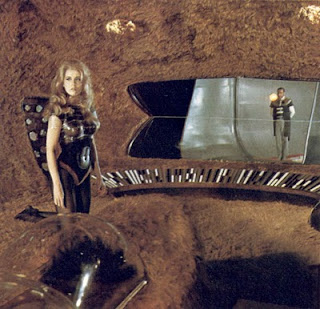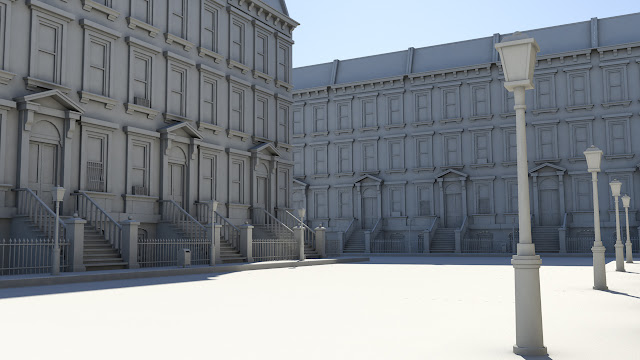The Dark Crystal is a fantasy adventure written and directed by Jim Henson, the legendary puppeteer whose mastery of storytelling has brought much joy to children all over the world. A thousand years ago a great conjunction happened when three suns lined up and the Dark Crystal cracked releasing the Skeksis and the mystics, the Skeksis became lords of the Crystal and represented evil and the mystics became nomadic travellers of good. The Skeksis assume stewardship of the world ruling with tyranny and fear; however, the Skeksis’s reign is about to come to an end, as the anniversary of the cracking of the great crystal approaches and the prophecy that a Gelfing, elf-like creatures of the earth, will bring their destruction to fruition. The Skeksis’s fear this prophecy will come to pass, so set out to kill all the Gelfings, but two survived, Jen and Kira.
Jen was taken in by the Mystics and schooled in reading and the arts, while Kira became a child of nature learning the various tongues of the animals. The two Gelfings travel to the Castle of the Skeksis’s with a shard of the broken Crystal in order to heal it on the day of the coming great conjunction. The directors brought to life the various environments of this mythical world on a sound stage in the studio. Some of the panoramic shots of characters travelling over great distances where filmed outside the studio. Steven D. Greydanus relays his interpretation of the production ”Imaginatively ambitious and often visually engaging, The Dark Crystal resolutely remains a distant, uninvolving experience. The filmmakers’ attention seems occupied by the technical challenges of bringing this fictional world to life; characters and emotions, even by the archetypal standards of high fantasy, never come to life, and the overarching mythology seems too self-consciously contrived rather than taking on a mythic reality of its own.” This statement is factually correct, but does not detract from the magic of the film. This film was made for children, and it was PG rated when it was released. The character’s emotions whether true to life or not, was not as important as the overall visual production, or the technical marvel of the animation of the puppets, which has made this film an iconic fantasy. The first sets we see are dark skies and the environment surrounding the castle. The rapid movements of the clouds into a gathering swirl over the castle create an image of dread and fear, while the desolate lands paint a picture of death. The use of deep purples and dark blues sets the mood for the audience to envisage the terrible nature of the Skeksis before they appear on film. “The Dark Crystal, besides being a dazzling technological and artistic achievement by a band of talented artists and performers, presents a dark side of Muppet creators Jim Henson and Frank Oz” The dark side of Jim Henson and Frank Oz find expression in the Skeksis’s castle, the pinnacle of all the set designs in this film. The exterior of the castle has the shape of a trident with its black structure protruding through the earth, but with many more prongs extending out through the walls. The castle’s exterior exhumed a sense of dread; a place you would not dare to visit. The Interior on the other hand was multi-faceted, perceived as dreadful in only a few scenes. Both of scenes took place at the bottom of the castle, one relayed the image of a great maze of tunnel-like catacombs that interlinked under the castle. The Garthin resided in the deeper darker parts of the catacombs. The second room, also in the dungeons of the castle, is right underneath the Dark Crystal’s room; this is where all prisoners are kept and re-programmed to serve the Skeksis as slaves. There were cages hanging from the ceiling and dotted all around, tools of torture pinned to the walls and what looks like an electric chair at the edge of a chasm where the Crystal is floating. The other rooms in the castle were not menacing at all, though messy and unkempt, particularly the dining room, which was littered with scraps of food. This room, like many others, had impressive set designs of towering stone-like walls.
The great hall where the Skeksis ruled had convincing carvings showing the tapestry of their history in stone alcoves. The Crystal chamber room with symmetrical lines embossed on the walls was also richly decorated with balconies. There was no doubt that this was their ritual room with symbolic shapes and signs underneath the Dark Crystal. The other sets are not on the scale of the castle, but were nonetheless just as impressive. We then see Aughra’s observatory, which exhibits an impressive moving replica of their solar system with a wall and ceiling made of glass through which Aughra could watch the stars. Other trinkets and decorations were strategically placed to emphasise her work with magic and science, confirming her title as the Keeper of Secrets. Most of the other scenes and sets where located outside, such as the home of the Mystics, who resided in stone ruins and caves in the mountain side where there was a forested grotto and a waterfall. This area had the tranquillity and peace of the grotto and the simple stillness of the rocks that lay dormant on the ground. The Gourmand’s village is a combination of the base of enormous trees and dirt huts built inside the tree. Simple and basic are images that come to mind with the great tree canopy blocking the majority of light from reaching the huts, thus producing the desired effect. The Gourmand are a race constantly under the scourge of the Skeksis to enslave them. Jim Henson’s children’s fantasy lives up to the genre, delivering a technically innovative movie with an original story of good and evil. Gregory Weinkauf expresses the nature of The Dark Crystal,“Immerses us in a familiar yet utterly unique world that's deeper, wider and more vibrantly alive than any mere puppetry.”

















































